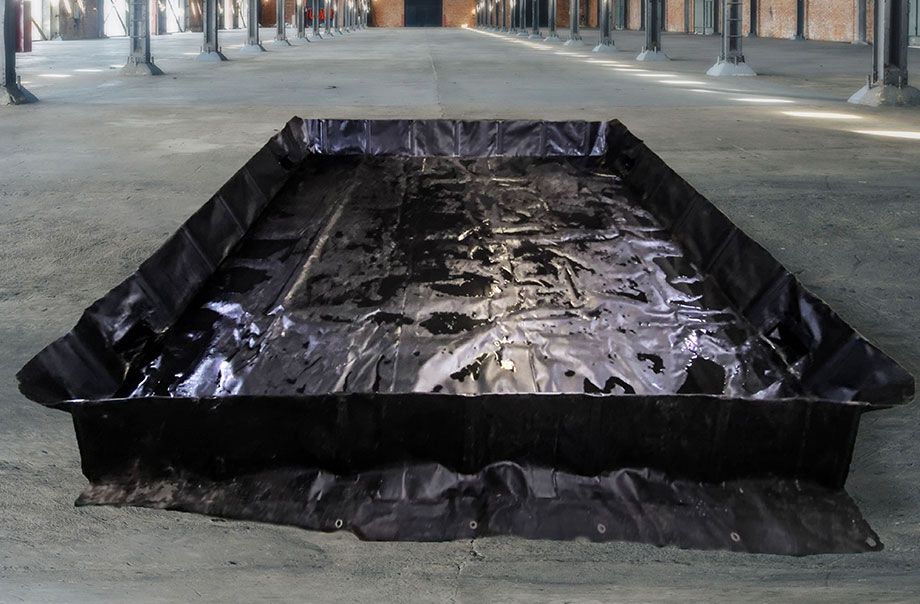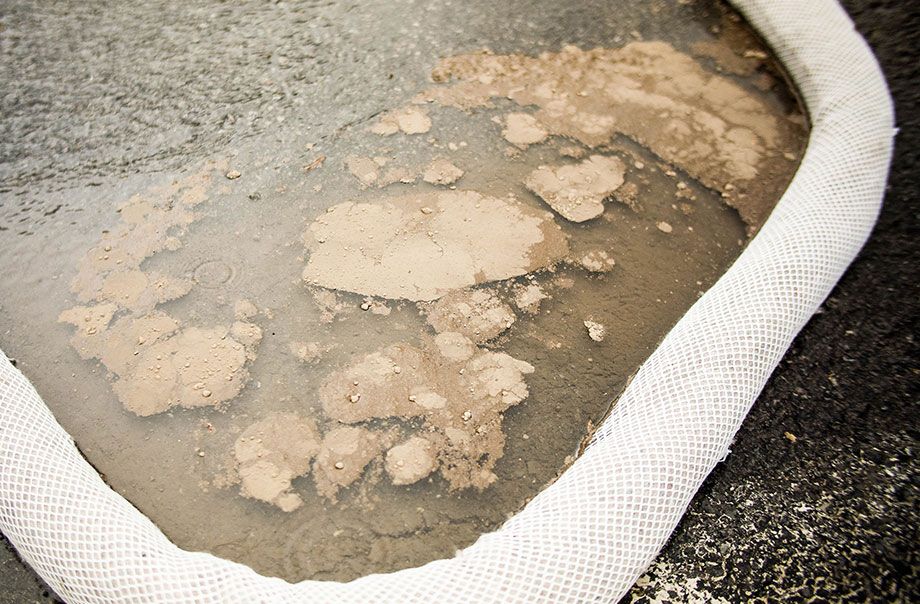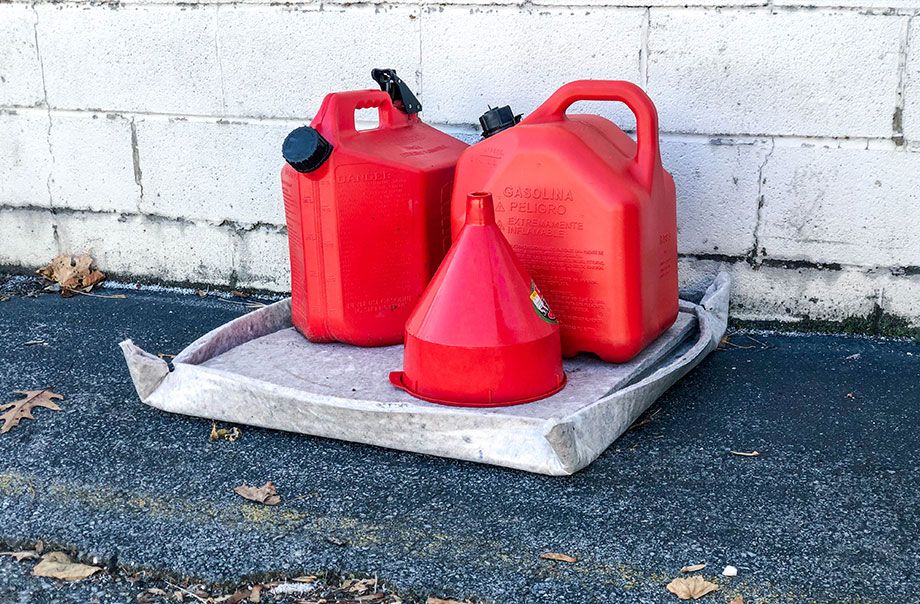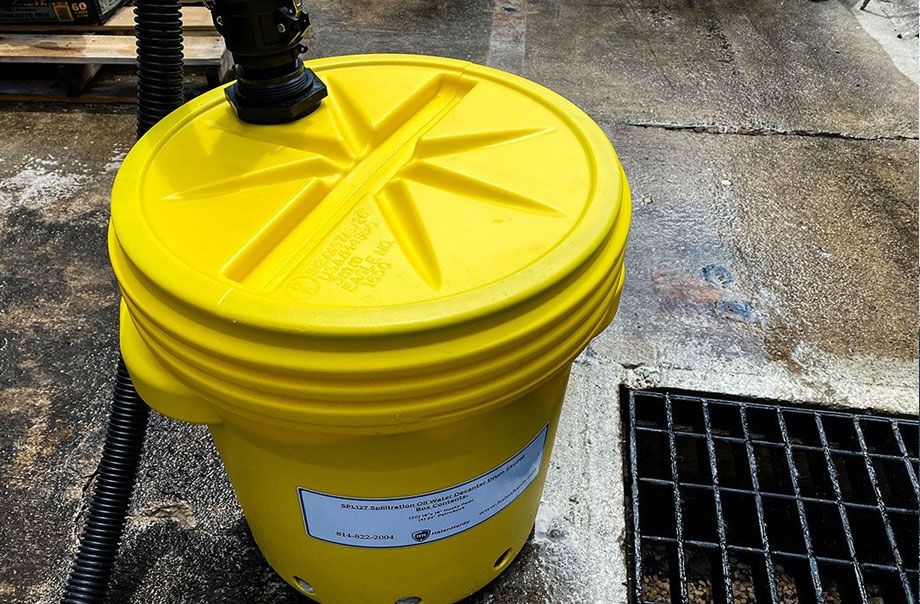
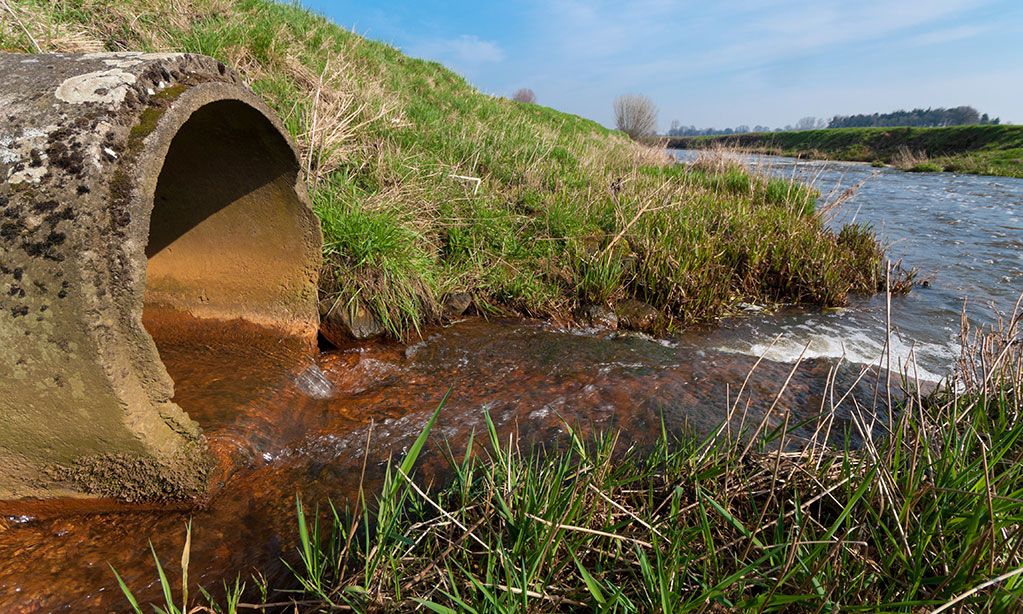
Top 5 Industrial Stormwater Pollutants
The top five industrial stormwater pollutants in our nation’s waters are a lot more common than you might think. In fact, chances are good that you see a majority of them every day.
The occasional big spill from a chemical facility isn’t the main source of pollution in our nation’s waters. It’s the accumulation of much smaller volumes of pollutants from multiple sources – residential, commercial and industrial – that causes everything from water quality issues like discoloration and algae blooms to uninhabitable aquatic areas where fish and fauna once flourished.
Stormwater includes precipitation, snowmelt, drainage and surface runoff. It’s part of the water cycle, and nature generally takes care of it. However, problems arise when pollutants are discharged into stormwater.
Stormwater discharges are releases of anything other than stormwater into a storm drain, lake, pond, stream, ocean or other body of water. The Federal Environmental Protection Agency (EPA) and state environmental agencies regulate water quality and have established regulations to help prevent excess industrial pollutants from entering the nation’s waters.
SWPPP’s Prevent Pollution from Industrial Stormwater Pollutants
Entities that discharge any type of pollutant into Waters of the United States (WOTUS) are required to establish and implement Stormwater Pollution Prevention Plans (SWPPP). These plans list activities at a site that could cause water pollution as well as the procedures, activities, devices and resources that are in place to prevent pollutants from being discharged.
Each facility’s SWPPP will also document training procedures for employees as well as the facility’s spill response plans. Although the focus is on proactive pollution prevention measures, facilities also need to be prepared to respond to releases quickly and effectively.
The EPA’s Stormwater Regulation defines pollutants:
“Pollutant means dredged spoil, solid waste, incinerator residue, filter backwash, sewage, garbage, sewage sludge, munitions, chemical wastes, biological materials, radioactive materials…, heat, wrecked or discarded equipment, rock, sand, cellar dirt and industrial, municipal, and agricultural waste discharged into water.” [40 CFR 122.2]
While some types of pollutants, such as chemicals, seem obvious; others like heat and sand sometimes surprise people. Even more surprising to some people is that hazardous chemical releases don’t even make the top five.
Stormwater Pollutant #1: Total Suspended Solids (TSS) / Turbidity
Across the nation, Total Suspended Solids (TSS) are the largest group of stormwater pollutants in surface waters by volume. Sand, plastic pellets, wood chips, powders and silt are some of the most common forms of TSS.
When these fine particles are suspended in water, they make the water cloudy. The particles can also help to transport other types of pollutants. As the particles settle, they can smother fish eggs, alter the flow of a stream and diminish oxygen levels in the water.
Like all pollutants, the most effective way to prevent TSS in water is to capture the particulates on land. Sweeping up dirt, debris and other particulates from paved surfaces is a good housekeeping practice that limits the chance of discharges.
STORM DRAINS
For large yards and other areas with vast amounts of paved surfaces, routine sweeping may not be feasible and capturing TSS before or as it enters storm drains is a more reasonable option. Installing filtering drain covers or inserts helps to capture sediment, debris and oily sheen while allowing the filtered stormwater to drain. Capturing these stormwater pollutants before they enter storm drains also makes maintenance faster and easier.
SECONDARY CONTAINMENT
Covering any pile of loose material that is stored outside, or moving loose materials indoors is another great starting point. Providing secondary containment for materials that can’t be stored outside is another Best Management Practice (BMP) utilized by many different types of industries.
Where secondary containment isn’t practical or possible, some facilities divert the stormwater from storage areas into vegetated swales or settling ponds. These methods allow the stormwater to infiltrate while capturing the solids.
CONCRETE CUTTING
Concrete cutting is an increasingly common source of TSS in stormwater. Most concrete cutting is now conducted with wet cutting methods, and most states and local municipalities now require the resulting concrete slurry to be contained and managed instead of allowing it to be flushed to a drain.
Containing the slurry and allowing it to dewater minimizes the TSS entering storm drains as well as the volume of concrete dust that needs to be managed.
DEWATERING
Dewatering process waters and water collected in retention basins or other areas also limits TSS discharges. Some dewatering devices can also help capture other pollutants like oily sheen or heavy metals.
Stormwater Pollutant #2: Dissolved Oxygen (BOD, COD) and Nutrients
Beverages, carbon-based chemicals, materials that contain sugar, grass clippings and urea are a few of the types of pollutants that rob oxygen from our nation’s waters. Excess nutrients, including nitrogen and phosphorus, are additional sources that add to oxygen depletion in water bodies.
As these pollutants enter waterways, they can create algae blooms and absorb the oxygen that fish and marine microorganisms need to survive. Oxygen depletion takes two forms:
-
Biological Oxygen Demand (BOD) is the amount of dissolved oxygen that bacteria and other microorganisms need to consume as they work to decompose organic matter. Organic, nitrogen- and carbon-containing pollutants in water compete for the available dissolved oxygen.
-
Chemical Oxygen Demand (COD) is the amount of dissolved oxygen that is required to oxidize organic chemical pollutants, like oils and petroleum products.
Although both measure oxygen demand, the difference is that COD measures the oxygen needed for anything capable of being oxidized; and BOD only measures the amount of oxygen required for microorganisms in the water to break down pollutants.
Good housekeeping measures, such as keeping containers closed and storing raw materials under roofs or tarps helps to prevent organic pollutants from migrating into vegetated areas and storm drains. Providing secondary containment around bulk tanks and in storage areas can also minimize the opportunity for chemical pollutants to be discharged.
Following manufacturer’s directions for applying fertilizers and nutrients in the right amounts, in the right locations (not near waterways or wells) and at the right time of year is another best practice that minimizes discharges. Landscaping and facility maintenance crews should also establish procedures to ensure that grass and other clippings are properly managed.
Stormwater Pollutant #3: Metals
Metals that are discharged with stormwater are attracted to sediment and other organic matter. They can sometimes float, mixing with other organic matter and forming a fine microlayer on the water’s surface that prevents the “good” bacteria in water from reproducing.
Metals also commonly bioaccumulate at the bottom of a waterbody and are eaten by fish and other marine life. When too much metal is digested or absorbed, it can cause tumors, lesions, reproductive and other health problems in aquatic life. It can also make fish unsuitable for human consumption.
Common metals found in stormwater samples include:
-
Aluminum
- Antimony
- Arsenic
- Beryllium
- Cadmium
- Copper
- Cyanide
- Iron
- Lead
- Magnesium
- Mercury
- Nickel
- Selenium
- Silver
- Zinc
Although some of these metals are naturally occurring and are essential elements – in large concentrations, they can be toxic.
Metal shavings and dust that accumulate on hard, non-porous surfaces can usually be managed the same way that TSS is managed: with good housekeeping and secondary containment methods. Diverting stormwater to a detention pond can allow metals to settle and minimize discharge. Filtration media can also be used as a polishing step to capture metal fines and dissolved solids.
Stormwater Pollutant #4: Hydrocarbons, Oils and Grease
Most of the oil that ends up in water bodies comes from leaks, drips and container overfills – not from big spills or offshore drilling. While motor oil, hydraulic oil and petroleum products are the common; vegetable and synthetic oils, phenol, butane, paraffin and ethylene are other examples of oils that end up in the nation’s waters.
According to the US National Research Council, about 1.3 million tons of oil and oil products end up in the oceans each year, globally. (That’s more than one billion gallons!) When these oils reach water, they spread quickly. Containing and cleaning up oil spills helps to prevent harm to aquatic life as well harm to birds and animals that come in contact with contaminated waters.
Oil doesn’t only spread quickly on water. It also moves fast on land – especially when it’s raining. Designating areas for fueling operations as well as oil dispensing and collection is an important operational practice because it helps to limit the areas where leaks and spills may occur.
Best practices for designated areas include:
-
Utilizing secondary containment devices
- Providing fluid level indicators
- Keeping containers closed
- Managing used oil filters, oily rags and other oily solids properly
-
Using drip pads where fluids are transferred
-
Filtering process and washdown waters to remove oil and sediment
Best practices also include having the ability to respond to spills quickly. Storing spill response supplies in fueling areas as well as fluid transfer and collection areas provides operators with the tools they need to get spills under control as well as quickly wipe up incidental leaks and spills.
Stormwater Pollutant #5: Temperature
Temperature fluctuations in a body of water affect the survival rates of fish and aquatic microorganisms. They also affect the rate of photosynthesis, which in turn affects the growth of plant life in a water’s ecosystem. Higher temperatures can also result in more dissolved minerals and lower dissolved oxygen levels.
In addition to elevated temperatures from process water runoff, runoff from impervious surfaces, like large parking lots and storage yards, can also cause thermal pollution. Unlike the other top pollutants, managing temperature variations typically requires engineered solutions.
Spraying water and using evaporation towers are two common methods for cooling process waters. Detention and retention ponds can also be utilized to allow collected stormwater or process water to cool off before it is discharged to receiving waters. Ponds have the added benefit of allowing accumulated water to evaporate and infiltrate.
Swales, rain gardens and permeable pavements are additional ways to allow water to infiltrate. These features can also help capture sediment and other pollutants like phosphorus and nitrogen.
Minimizing and Maintaining
It’s not always possible or practical to eliminate sources of pollution. It is, however, possible to capture most sources before they reach receiving waters. Incorporating housekeeping practices and utilizing simple engineered solutions can help keep these most common water pollutants on land -where they’re easier to capture and manage.
Related Articles
TALK TO AN EXPERT
If you have a question about stormwater management, we’re here to help. Our team can address your questions and assist in implementing changes to your SWPPP. Call 814-822-2004 or email sales@halenhardy.com.
